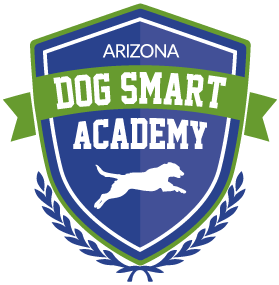INTERMEDIATE COURSE 201 : SERVICE DOG TRAINING LEVELS 1-3
Being a service dog trainer involves training dogs to become potentially life-saving pieces of medical equipment, while also training a person with a disability to become a service dog handler.
Background of Service Dogs
- Types of Service Dogs
- Legal information – the ADA and business interaction & Service Dog vs ESA vs Therapy
- Accreditation
- Program dogs vs Owner-Train vs Private Trainer -Differences between programs
Service Dog Core Behaviors – there are certain things that every service dog must be proficient at in public, regardless of their task or type of assistance.
- Core Obedience – heel, side, rear-end awareness, stay, wait, recall, auto-leave it, leave it, go in
- Generalization: a service dog needs to perform reliably for almost any handler
- Why use positive reinforcement or force-free methods?
- Example of Public Access Test
Service Dog Handlers/Owners
- Determining if a service dog is the right mitigation for this client’s disability and life-style. -Things clients need to consider and/or experience to know they want a service dog, Including: Amount of work involved, living situation, and public scrutiny.
- Most important tasks – vary client to client.
- Learning to live with a service dog- Teaching clients to care for their service dog. This often involves breaking “bad habits” about animal care.
- Teaching clients how to maintain their service dog – Follow-up training – ways to schedule it, compliance, and tools.
Mobility Assistance Dogs
- Different Types of Mobility Impairments
- Core Mobility Behaviors – Distance behaviors, retrievals, tug, touch, body awareness, wheelchair work
- Advanced Mobility Behaviors – Brace work, specific retrievals, getting dressed.
Diabetic Alert Dogs – scent based working dogs
- How scent training works
- Selecting a dog – determining suitability
- Selecting an alert or alerts
- Generalization!
Public Access
Training a dog to be calm, reliable, and under control at all times and in a multitude of environments is challenging to say the least. Socialization is important, and creating short but successful trips for generalization are key.
- Taking a dog into public – How to be unobtrusive with your dog and navigate different environments including safety elements: elevators, bathrooms, crowds, parking lots and more.
- Interacting with the public – Answering questions, dealing with public access denial
Cost $850 for the 6 week course. This course is offered in person or by distance training via video.
Next course starts soon!
INTERMEDIATE COURSE 201: HANDLING & IMPULSE CONTROL
The most difficult thing for clients in dog training is handling a dog positively and effectively. With this comes a very common challenge; managing a distracted dog. This class is designed for students who know what to do and have learned how to redirect their own dog in class, but struggle when handling a clients’ dog. Additionally, when their dog is distracted in public, they often don’t redirect the dog positively and immediately. This usually happens because they’re not used to responding to unexpected distractions. This class will teach students a skill set to work with client’s dogs.
Goals
✓ Preventing bad situations in the facility and public place
✓ Redirecting a dog with the right handling and correct timing
✓ Using force free and positive ways to redirect dogs
✓ Be stress and embarrassment free!
✓ Creating good habits through repetition
Specification
In order to prevent a bad situation, avoid conflicts, handle a dog properly in the facility and in public places; the next 5 steps are extremely essential and strongly suggested to master.
5-Steps to Success
1. Prevent Bad Situations
2. Get Connected With Your Dog & Get Your Dog’s Attention!
3. Redirect Your Dog!
4. Give Your Dog Jobs!
5. Repeat, Repeat, Repeat!!!
Curriculum
Six Week Class
- WEEK 1: INTRODUCTION, CONNECTING WITH A DOG & GETTING A DOG’S ATTENTION
- WEEK 2: GETTING A DOG’S FOCUS
- WEEK 3: REDIRECTING A DOG & GIVING A DOG TASKS OR A JOB
- WEEK 4: QUIZ & ACTIVITIES (ADDING THE 3 D’S: DURATION, DISTANCE, DISTRACTION)
- WEEK 5: ACTIVITIES & RAISING CRITERIA
- WEEK 6: PROOFING DOGS IN A BROAD RANGE OF CIRCUMSTANCES & STUDENTS HANDLING CLIENTS’ DOGS




